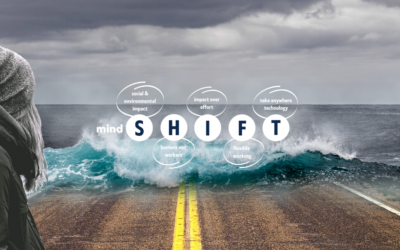At a time characterised by worsening ecological degradation and deepening social upheaval, there’s never been a brighter spotlight on companies and their broader social and environmental impact on the world.
Businesses have a lot to think about to thrive in our complex and changing work environment. The beauty of the mindSHIFT is that it accommodates all these business priorities with social and environmental impact.
The critical decade for climate change
Human induced climate change is warming our world at a faster rate than ever previously seen and without considerable and swift action from all sectors of society, we are on a path towards irreversible ecological and potentially, economic collapse.
The good news is that the world is finally taking notice. Once the lone cry of front line environmentalists, the world has finally woken up to the need to significantly reduce our global emissions, ideally limiting overall warming to 1.5°C above pre industrial temperatures. As highlighted by a collective of the world’s leading climate scientists and the Intergovernmental Panel on Climate Change (IPCC), every little bit of carbon reduction we can do now can help us avert the worst impact, maintaining the health of our planet for the benefit of all society – business included.
So with global momentum building off the back of COP26, the time to act is now. This is our critical decade, and businesses of all sizes, almost especially small to medium enterprises, have a key role to play. No matter how small your business, there’s still much that can be done. Collective action needs everyone.
The beauty of size: how small and medium enterprises can lead the way
While carbon reduction pledges of the world’s biggest companies are those we generally see in media headlines, it’s important to keep in mind that small and medium sized enterprises make up the largest proportion of the global economy. This means that it’s their actions that can drive the shift to net zero.
Of course, an SME cannot truly compete with the resources available to a big tech titan or an ASX100 company. But what they lack in resources, they can more than make up for in nimbleness. A key factor here is size. The smaller you are, the more agile you can be. SMEs aren’t bogged down with the same levels of bureaucracy that beset the bigger fish. When an SME identifies the need for change, they can adapt faster than a corporate can do, where change processes are often frustratingly slow.
Reducing Australia’s emissions at the pub
For an SME, getting started with this process can be as simple as switching power providers.
Recent research from online power retailer Powershop Australia, found that an average Australian pub or bar emits around 11.6 tonnes of greenhouse gas (GHG) emissions each year, with more than a third of this coming from electricity use alone.
If these businesses were to switch their energy providers to retailers that offset their usage, they could immediately reduce their overall carbon footprint by 34%. Simply put, if every pub were to take this easy action, through a quick phone call or a few clicks, it’d be the equivalent of taking 6,800 cars off the road each year.
Similarly, the research also found that the entire hospitality and retail sector could achieve a 30% reduction in their carbon footprint by switching energy providers. And, with Australia’s 2.4 million SMEs emitting 40% of the nation’s carbon emissions, the potential national reduction achievable by just a few small changes is profound.
Everyone has a role to play
The important thing to remember in any change process is that it’s about progress, not perfection, and getting started is what’s key.
As we’ve written previously, you can’t manage what you can’t measure, so a simple carbon footprint calculator – like this one or this one – will help you better understand where your emissions are coming from. As the pub example demonstrates, this can help you identify the actions that consume the least resources.
Other simple and cost effective actions could include offsetting company flights, or switching banking or superannuation providers, to companies that offer carbon neutral investment options. These simple switches are likely to give you that bit of momentum you need to plan out and fund longer term carbon reduction strategies.
Once that momentum and funding is established, more substantial strategies could include:
- upgrading your physical premises with more energy efficient products and appliances,
- identifying and switching your raw materials to more sustainable alternatives,
- including a climate performance metric when assessing potential partners and clients,
- hiring staff with formal sustainability qualifications to help you manage and measure your progress,
- investing in energy generation and storage options such as solar panels and batteries, and
- switching company fleets to electric vehicles.
We recognise that these processes take time, energy and of course, capital. But by acting now, SMEs can help to invest in a liveable future.
As such, these simple changes to how you do business should be seen as important long term investments in the future state of your operation. And, it’s not only because those changes mitigate against future warming but also because they enable businesses to become more resilient to our region’s hotter and drier climate.
Finally, some of these simple changes are subsidised by government programs like the Emissions Reduction Fund or state and territory based energy efficiency schemes like these ones in VIC and NSW.
It should all be a bit of a no-brainer for SMEs. If you’re after that bit of structure and support to help you do so, we’re always here to help.



